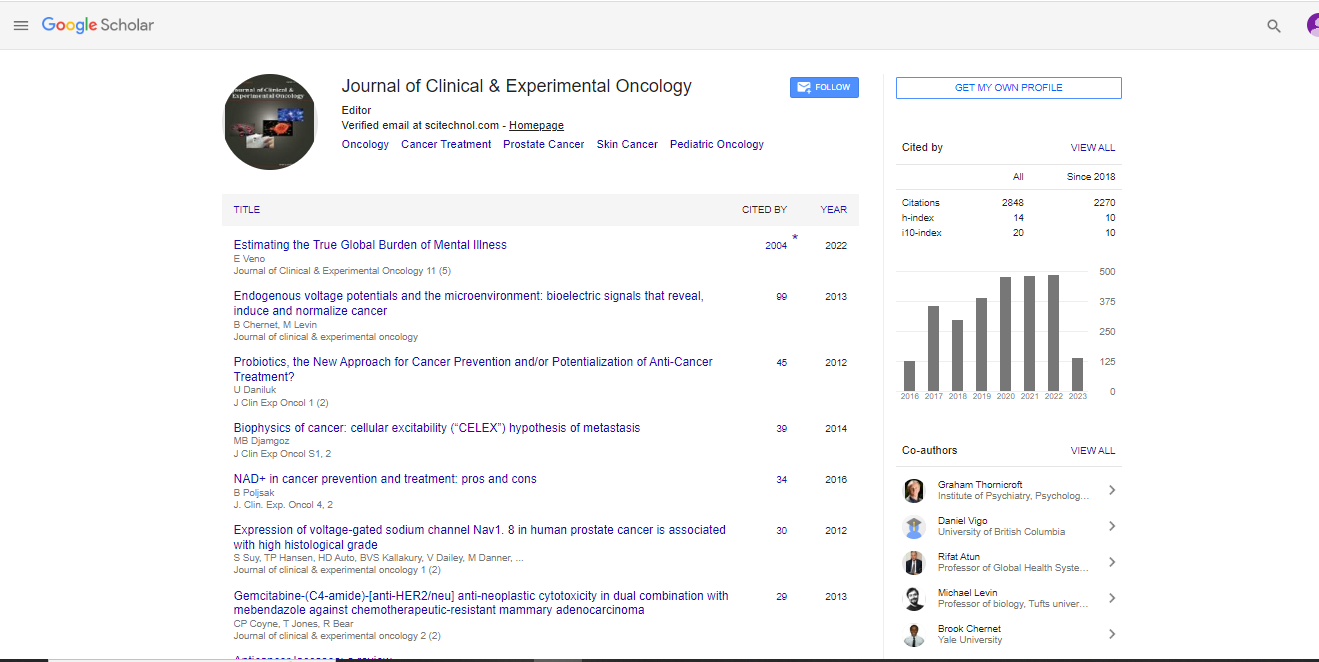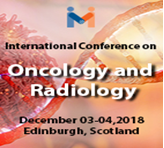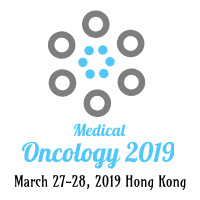Perspective, J Clin Exp Oncol Vol: 13 Issue: 6
Enhancing Traditional Methods in Modern Breast Cancer Management
Emma Volk*
1Department of Oncology, University of Calgary, Calgary, Canada
*Corresponding Author: Emma Volk,
Department of Oncology, University of Calgary,
Calgary, Canada
E-mail: evolk@ucc.edu22.ca
Received date: 27 November, 2024, Manuscript No. JCEOG-24-156849;
Editor assigned date: 29 November, 2024, PreQC No. JCEOG-24-156849 (PQ);
Reviewed date: 13 December, 2024, QC No. JCEOG-24-156849;
Revised date: 20 December, 2024, Manuscript No. JCEOG-24-156849 (R);
Published date: 27 December, 2024, DOI: 10.4172/2324-9110.1000439
Citation: Volk E (2024) Enhancing Traditional Methods in Modern Breast Cancer Management. J Clin Exp Oncol 13:6.
Description
Breast cancer remains one of the most prevalent cancers globally, affecting millions of women and, to a lesser extent, men. As the fight against breast cancer continues, the combining of modern technologies with traditional methods has become essential in improving outcomes. The traditional approaches of surgery, chemotherapy and radiation therapy have long been the backbone of breast cancer treatment, but recent advances in precision medicine, immunotherapy and specific care have changed the environment. The traditional methods of managing breast cancer have proven effective over the years. These include surgery, chemotherapy, radiation therapy and hormone therapy. Each method has a distinct role in the treatment process, often used in combination to address different stages and types of breast cancer. Surgery has been the primary method of breast cancer treatment. The purpose is to remove the tumor and surrounding tissue to ensure that the cancer is eradicated. Types of surgery include lumpectomy (removal of the tumor only) and mastectomy (removal of the entire breast). While surgery remains highly effective, its invasive nature can lead to complications, including infection, scarring and long recovery times. These challenges have prompted the need for less invasive techniques, such as minimally invasive surgery and robotic-assisted procedures, which aim to reduce recovery time and improve patient outcomes. Chemotherapy uses powerful drugs to kill cancer cells or prevent their growth. While it has significantly contributed to the survival rates of breast cancer patients, chemotherapy can be associated with severe side effects such as hair loss, fatigue and nausea.
Advances in chemotherapy delivery systems and drug formulations have worked to reduce these side effects and improve the precision with which the drugs target cancer cells. Radiation therapy uses highenergy rays to destroy cancer cells. It is often used after surgery to eliminate any remaining cancer cells in the breast or surrounding tissues. While effective, radiation can damage healthy tissues leading to side effects such as skin irritation, fatigue and in rare cases, secondary cancers. As radiation techniques improve, more targeted radiation therapies such as Intensity-Modulated Radiation Therapy (IMRT) and proton therapy are being introduced to minimize collateral damage and improve outcomes. Hormone therapy is used for cancers that are hormone receptor-positive (estrogen or progesterone receptors). It aims to block the hormones that fuel the growth of certain types of breast cancer. Drugs like tamoxifen and aromatase inhibitors are commonly used in hormone therapy.
However, the effectiveness of hormone therapy depends on the cancer's specific characteristics, making it essential to modify the treatment to the individual patient. While traditional methods have proven effective in treating breast cancer, the incorporation of modern innovations can enhance the effectiveness, precision and patient experience. These advancements range from specific medicine to noninvasive monitoring and targeted therapies, which aim to improve both survival rates and quality of life for patients.
Conclusion
The management of breast cancer has evolved significantly over the past few decades. While traditional treatments like surgery, chemotherapy and radiation therapy remain essential, combining modern innovations has enhanced the effectiveness, precision and quality of care. Specific medicine, immunotherapy, targeted therapies, liquid biopsies and artificial intelligence changing the field of breast cancer management, providing patients more specific and less invasive treatment options. By continuing to build on the strengths of traditional methods while incorporating modern technologies, healthcare professionals can improve patient outcomes and eventually work toward the cure of breast cancer.
 Spanish
Spanish  Chinese
Chinese  Russian
Russian  German
German  French
French  Japanese
Japanese  Portuguese
Portuguese  Hindi
Hindi 



